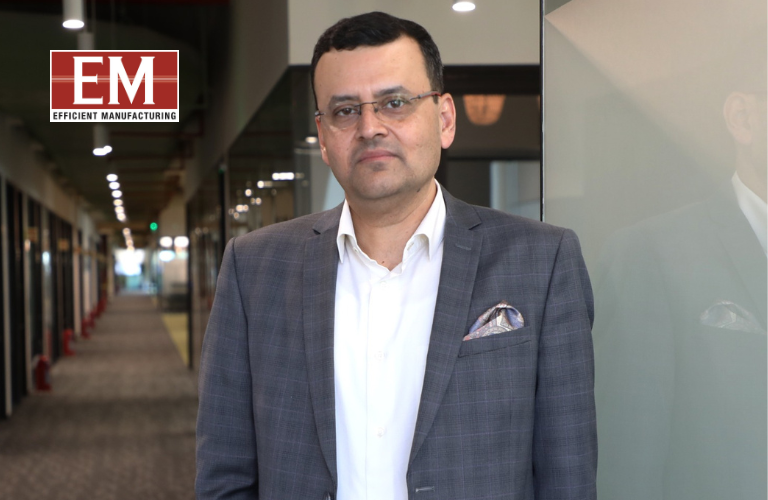…..by Vipin Kaushik Founder and MD Laburnum Developers
The 2025 Investment Landscape: A New Normal
As we step deeper into 2025, one of the most recurring questions among investors, homebuyers, and wealth managers is: Does real estate still make sense as an investment? The answer lies in understanding how this sector has evolved amidst the turbulence of the past five years.
From the COVID-19 pandemic and global inflation to the restructuring of work-life balance and rising interest rates, the real estate market has weathered seismic shifts. And yet, the essence of real estate,being a tangible, income-generating, and appreciation-friendly asset,has remained intact. In fact, it has adapted and matured, carving out new niches and priorities.
Among the most promising segments to emerge in this new landscape is builder floors and premium low-rise living, particularly in cities like Delhi-NCR, which are witnessing a decisive transformation in urban housing preferences.
From High-Rise Saturation to Low-Rise Aspirations
The post-pandemic world has seen a recalibration of priorities. Home is no longer just a physical space,it is a personal retreat, a workplace, a wellness hub, and an expression of identity. This shift has driven a rising demand for builder floors, a form of low-rise housing that blends the exclusivity of bungalows with the practicality of apartment living.
In markets like South Delhi, Gurugram, Noida, and Faridabad, builder floors have become the preferred choice for premium buyers. These homes offer greater independence, lower density, private parking, fewer shared walls, and often, personal terraces or gardens. Unlike high-rise apartments in large societies,where amenities are often shared among hundreds,builder floors provide greater control and enhanced privacy, making them far more desirable in a post-COVID era.
This shift is not just consumer-driven. Developers too are increasingly moving away from high-rise formats, instead focusing on low-rise boutique residences that allow quicker construction timelines, better quality control, and easier customisation for buyers.
Why Builder Floors Make Investment Sense in 2025
Builder floors have emerged as one of the smartest real estate bets of this decade. Here’s why:
1. Scarcity of Land in Urban Centers
Premium neighborhoods in Delhi-NCR have a fixed supply of residential plots. Redevelopment of older homes into builder floors is one of the few ways to generate new inventory. This limited availability naturally drives up demand and prices over time, making builder floors less volatile and more secure in value retention.
2. Appreciation with Usability
Unlike speculative plots or high-rise apartments in oversupplied corridors, builder floors provide livable luxury with high usability. They are often end-user driven, which makes the investment more stable and less prone to sudden corrections.
3. Rental Demand and Dual Income Potential
Builder floors in established sectors attract both families and corporate tenants looking for quality homes in well-connected locations. Some properties also offer dual-income streams through upper-floor rentals or studio conversions, enhancing yield potential.
4. Lower Maintenance, Higher Control
Low-rise properties typically have significantly lower maintenance costs compared to gated societies. Residents have greater say in decision-making regarding building upkeep, security, or upgrades,a big plus for many discerning buyers.
ESG and Design-Forward Investments
Today’s buyer, especially in the premium segment, is increasingly environmentally conscious and design-savvy. Builder floors are quickly adapting to this trend, incorporating green building features such as:
- Solar rooftop panels
- Rainwater harvesting
- Smart lighting and automation
- Energy-efficient building materials
- EV charging points
These features are no longer add-ons,they are essential to long-term value preservation. Properties that ignore these aspects may soon face regulatory penalties, reduced buyer interest, or higher operating costs.
Navigating Risks: Financing, Policy, and Market Discipline
While the opportunity is substantial, investors must also approach with strategic discipline. Higher interest rates in 2025 mean that home loans and construction financing are more expensive than they were a few years ago. Additionally, governments are tightening real estate regulations with new taxes on vacant homes, curbs on short-term rentals, and more stringent building norms.
Thus, location, builder credibility, legal clearances, and long-term usability must guide investment decisions. Projects by reputed developers with transparent practices and proven delivery records,especially those focused on low-rise formats,are far more bankable in today’s market.
In the case of Laburnum Developers, for instance, our philosophy has always been to marry design with durability and location with long-term value. We believe low-rise doesn’t mean low-impact,it means high relevance in a changing world.
Looking Ahead: Where the Value Lies
As urban India continues to expand horizontally and vertically, builder floors sit at a unique intersection of heritage and modernity. They retain the architectural charm and independence of older homes while embracing new-age sustainability, smart automation, and premium finishings.
With land becoming increasingly scarce in urban centers, and demand for lifestyle-oriented housing rising, builder floors are positioned to appreciate strongly,both in monetary and lifestyle terms.
Conclusion: Still a Solid Bet,If You Choose Right
Real estate in 2025 is not a game of fast profits or emotional decisions,it is a game of strategy, patience, and precision. For the well-informed investor or discerning homebuyer, builder floors offer the perfect blend of exclusivity, functionality, and long-term value. They represent not just a home, but a hedge against inflation, a source of recurring income, and a legacy investment that appreciates in more ways than one. As India’s cities grow smarter and families seek more refined lifestyles, premium low-rise living is not just a trend,it’s the future of real estate.












